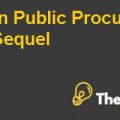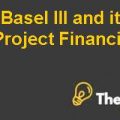
Question 1
How do you explain the apparent excess returns and low volatility associated with junk bonds in the earlier 1980s?
Answer 1
Junk Bond
- Junk Bond is the Ordinary bond type which comes with lower credit rating.
- In this bond the amount is stated like principal amount
- It also mentions the maturity date and shows the interest rate as the coupon rate.
Explanation
The company had felt that investment should be made in High-yield Bonds, which meant Junk Bond in the year 1980 with respect to the excess return and low volatility. The impact of these changes is given below under the respective headings.
Excess Returns
- The excess returns show the potentiality of the return with respect to the Junk Bond Criteria and their Rating.
- These returns, are following the strategy of High-Yield Investment for gaining the return power in the short term period.
- The effect comes out because of the high returns which is ten percent of the investment of the bond.
- Economic Constraint will change the effect of the returns which attract the investor towards the company.
- These effects come from high yield policy, which is Moody investor service and Standard & Poor`s services.
- The low volatility effects come from economic changes with respect to low investment.
- This investment grade is lower as compared to the Junk Bond up to the requirement.
- The effect of the changes comes because of the environment with respect to the investment criteria.
- The Credit rating has been positioned in the lower part which covers the direction of the low investments.
Low Volatility
Question 2
Answer 2
- Should Anchor/thrifts invest in junk bonds?
- Anchor should invest in the Junk Bond with respect to notify the investment criteria and their credit rating.
- The economic indicator shows the feasibility condition with respect to greater amount of investment.
- The environment of the government policy shows green signal to this Investment with respect to the Financial Strength in the United States
- The Rate of the “Junk Bond” investment should be above, then fourteen percent, which will give the feasible end to the company.
- Assuming Anchor decided to invest in junk bonds in general, should it invest in any (or all) of the Metromedia securities? Why?
- The investment decision with the Junk Bond in the Metromedia Securities is good.
- The reason is justifying the financial strength of the company with respect to the ratio of debt and equity 40:60 percent.
- Securities of Metromedia are producing good returns with moderate validity of the investment.
- Economic circumstance follows the right path towards the company.
- High Risk provide higher rewards for the company with respect to the above credit rating among all ratings.
- The company should acknowledge the criteria of the investment on high notes
One more reason is the short term investment with the particular nature of the risk level and its extent as it would be based on analytical skills......................
This is just a sample partial case solution. Please place the order on the website to order your own originally done case solution.
Describes the high-yield market, or "junk" bonds, and includes a brief research on the risk / return characteristics of high-yield securities. Describe the role of Drexel Burnham Lambert in the primary and secondary markets for high-yield debt. The solution focuses on public offering of four high-yield securities issued by Metromedia Broadcasting Corporation in November 1984. The proposal has been used to refinance bank loans incurred in connection with June, Metromedia in 1984 leveraged buyout. Securities included serial zero coupon notes due 1988-93, replacing senior variable rate bonds due 1996, 15 5/8% senior subordinated notes due 1999, and adjustable rate subordinated bonds participation by 2002. Proceeds from the offering amounted to $ 1.2 billion. "Hide
by Scott P. Mason, Sally E. Durdan Source: Harvard Business School 26 pages. Publication Date: Dec 02, 1985. Prod. #: 286044-PDF-ENG













